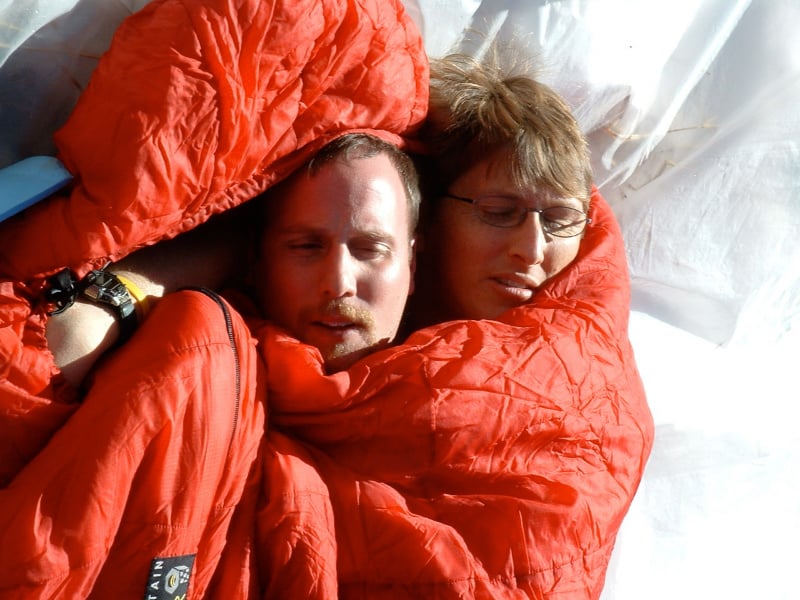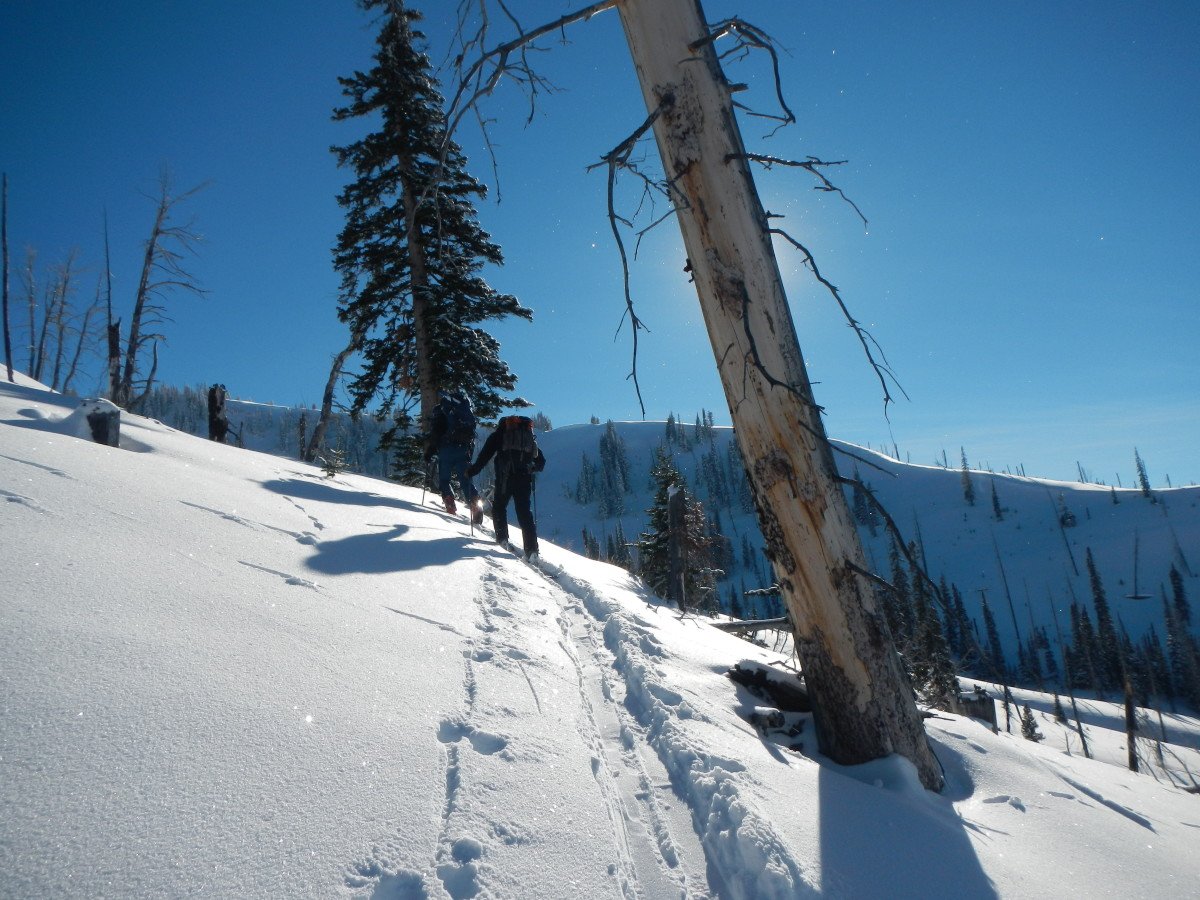
If you teach a class on hypothermia in the wilderness, you are bound to be asked about the value of a warm person snuggling with a cold person in a sleeping bag. Actually, "snuggling" may not be the best word, because, putting aside the giggles, it’s not easy or fun to hug a physically cold person. Snuggling is a necessary task, not a recreational experience.
I’ve been told two people in a sleeping bag to treat hypothermia is the “standard of care” in the wilderness. Actually, it’s not. The science isn’t strongly in its favor. The limited research into body-to-body warming says that it doesn’t help much, but also that it probably doesn’t harm.
Myths about Snuggling to Treat Hypothermia
Clothes, or No Clothes? Ideally, the people should be nude. The more skin to skin contact the better. However, realistically, even nude, direct skin contact between the heat donor and the patient is small.
Will Warming Up Make the Patient Stop Shivering? We know that shivering is a powerful means, indeed one of our best tools, to produce heat in a person who has the energy reserves to shiver. But, we also know that warming the skin blunts the shivering response. We don’t know the significance of the shivering inhibition from warming skin because, even if the patient shivers less, they feel more comfortable and preserve their energy reserves (e.g., they burn fewer calories shivering).
Will the Heat Donor Become Hypothermic? I’ve seen heat donors realize that snuggling isn’t a lot of fun, but in the real world donors don’t become hypothermic.
What Happens if the Sleeping Bag Gets Sweaty Inside? We’re often asked about the donor sweating and wetting the insulation. Yes, it can become steamy in there, but in our experience wet insulation has not been a problem.

Pros and Cons
What are the positives of putting another person in the bag?
- You can monitor the patient closely.
- You may help the patient warm while they expend fewer calories shivering and warming the insulation, just like the thermos bottle of the hypothermia wrap.
What are the negatives?
- You may not be able to close the opening of the sleeping bag. The effectiveness of the hypo wrap may be reduced.
- You’ll have the weight of two to carry (assuming you are doing a carry).
- The heat donor is not able to help with other important tasks such as building a fire and preparing shelter, hot drinks, and food.
As always, we’ll use our judgment, understand the principles of treatment, and weigh the factors in our specific scenario when we decide whether to put a second person in the sleeping bag or not.
Written By
Tod Schimelpfenig
As a NOLS Instructor since 1973 and a WEMT, volunteer EMT on ambulance and search and rescue squads since the 70s, Tod Schimelpfenig has extensive experience with wilderness risk management. He has used this valuable experience to conduct safety reviews as well as serve as the NOLS Risk Management Director for eight years, the NOLS Rocky Mountain Director for six years, and three years on the board of directors of the Wilderness Medical Society, where he received the WMS Warren Bowman Award for lifetime contribution to the field of wilderness medicine. Tod is the founder of the Wilderness Risk Manager’s Committee, has spoken at numerous conferences on pre-hospital and wilderness medicine, including the Australian National Conference on Risk Management in Outdoor Recreation, and has taught wilderness medicine around the world. He has written numerous articles on educational program, risk management and wilderness medicine topics, and currently reviews articles for the Journal of Wilderness and Environmental Medicine. Additionally, he is the author of NOLS Wilderness Medicine and co-author of Risk Management for Outdoor Leaders, as well as multiple articles regarding wilderness medicine. Tod is the retired curriculum director for NOLS Wilderness Medicine and is an active wilderness medicine instructor




